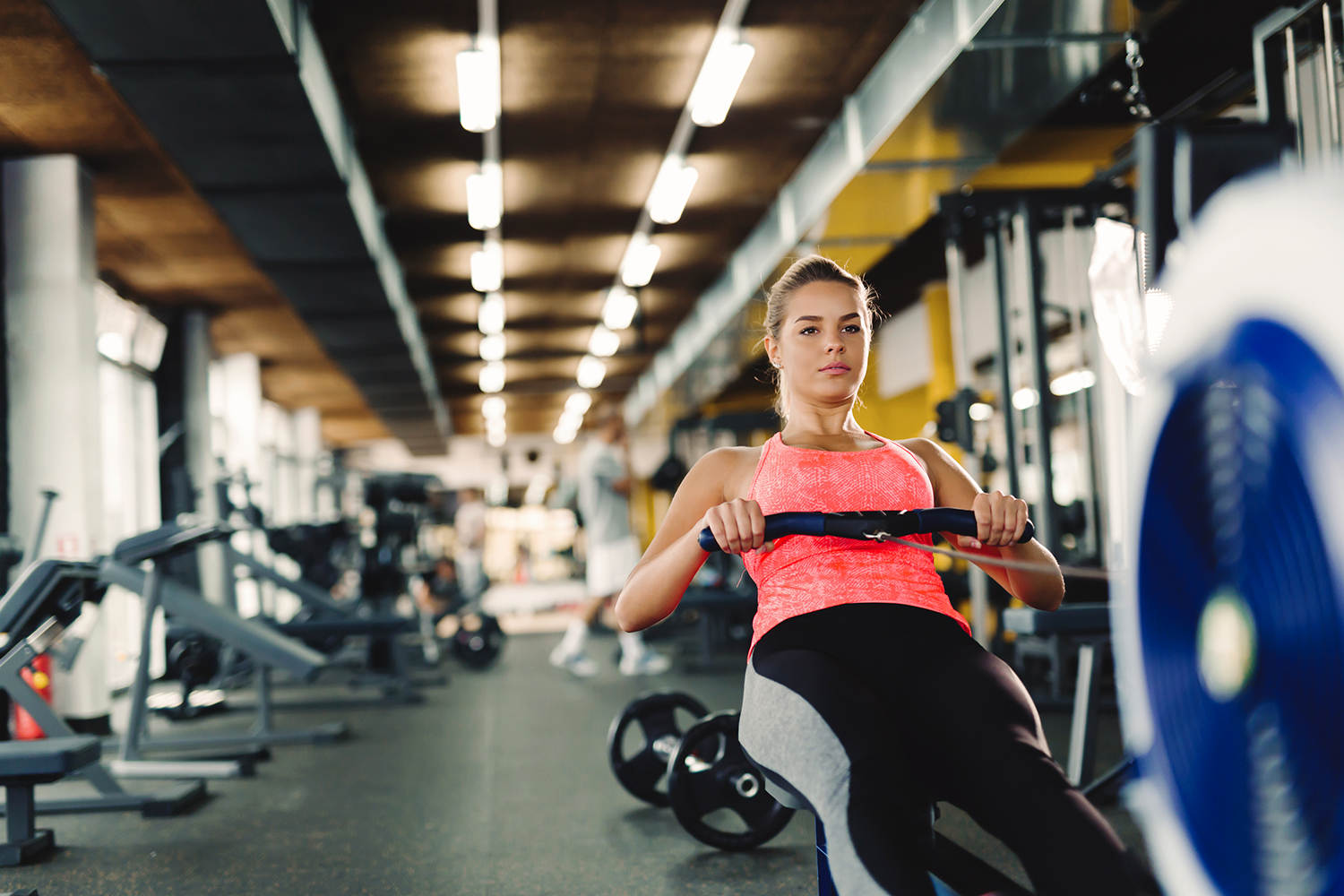If you’re like most gym-goers, you’ve probably tried working out on a rowing machine at your club or fitness center at some point.
Maybe you tried rowing for a few minutes after running or cycling to break the monotony of your workout. At best, you’ll probably find those rowing machines tucked away in the corner or behind a row of treadmills or bicycles in your club.
Most people don’t consider that indoor rowing can be a complete workout in and of itself. But just ask Bob LeFavi, PhD, a professor of sports medicine at Armstrong Atlantic State University in Savannah, Georgia. He’s been touting the benefits of indoor rowing for years and is a passionate believer that rowing can take your workout to the next level.
“If you’re looking for a way to jump-start your exercise program, boost an exercise plateau, or get unstuck from a monotonous training program, indoor rowing can solve all your problems,” says Dr. LeFavi, an editorial adviser to this magazine and the former director of a fitness center.
Benefits of Indoor Rowing
Dr. LeFavi considers indoor rowing one of the best exercises because it’s a total-body workout that targets the largest number of muscles, while covering your cardio needs, too.
Rowing is 80 percent legs, he says, but you’re also using your lower and upper back; biceps, forearms, and shoulders; and even your abs and hip flexors.
Rowing is also a very-low-impact activity and a great way to cross train for other sports. Dr. LeFavi sees few chronic problems related to rowing compared with running and other high-impact sports, which can be taxing on your knees and shins.
Whatever your fitness level, you’ll find that today’s rowing machines feel a lot more like actual rowing, thanks to new technology.
“Best of all, rowing is fun. All the newer rowing machines have gauges that count calories and clock your speed,” Dr. LeFavi says. If your goal is to get competitive with indoor rowing, you’ll also find a network of indoor rowing competitions.
How to Get Started
If you’re new to rowing, you’re going to be surprised at how physically demanding the workout is on your body compared with the other indoor cardio activities you already do.
One reason: even if you’re regularly doing cardio, your body might not be used to the strength-training component of indoor rowing. Dr. LeFavi suggests starting slowly and working your way up to longer time intervals.
Your first time on the rower should last no more than 4 minutes, and your pace should be no faster than 2.5 minutes per 500 meters (on most rowers you’ll see this number on the display readout).
Also make sure to use the least amount of resistance.
Ultimately, your main goal when getting started is to focus on form and nail down the proper rowing technique.
Basic Rowing Technique
So what’s the best way to perfect your rowing form? Watch your form in a mirror or have a personal trainer spot your technique. Dr. LeFavi says that it takes practice, but once you get into the flow and rhythm of the movement it begins to feel natural.
Let’s start with the basic rowing technique. We’ll break it down into four phases:
-
The Catch
This is the start of the rowing sequence. Grip the handles with your palms facing downward.
Your shins should be perpendicular to the floor, your knees bent, your back rounded, and your elbows and arms extended.
-
The Drive
This portion of the rowing movement demands power from your legs, not your lower back or arms, says Dr. LeFavi.
Extend your legs, pressing your feet against the platform. At the same time you’re using your upper body to pull the handle toward your chest, keeping your arms straight.
-
The Finish
When your knees are just about straight but not locked out, bend at the elbow and pull the handle toward you. Lean slightly backward, using the hip as a hinge.
Finish by pulling the handle into your lower rib cage with your elbows at your sides and forearms horizontal.
-
The Recovery
As soon as you’ve finished the stroke, straighten your arms and pull forward until you are fully flexed at the knee and ready to start from the catch position again.
Rowing Workout Program
Now that you know the basics, you’re ready to get started on the indoor rowing workout program that Dr. LeFavi designed for us.
When you first start out, incorporating a few short indoor rowing workouts into your overall fitness regimen is best. Once you reach 20 minutes or more per workout session, Dr. LeFavi says you can row four times a week.
Suggested Rowing Plan
-
Week 1
4 to 5 minutes per session, three days a week.
-
Weeks 2 - 5
7 to 10 minutes per session, three days a week.
-
Weeks 6 - 12
15 to 20 minutes per session, three to four days a week.
Advanced Workout
Try interval training.
- Go all out for 500 meters.
- Catch your breath while rowing slowly (about 20 strokes per minute) and lightly for 300 to 400 meters.
- Go all out for another 500 meters.
Repeat the intervals throughout your workout.
Reaching Your Goals
If your goal is cardio conditioning, Dr. LeFavi suggests increasing your total time over the weeks while staying at a slow or moderate pace of 2.5 minutes per 500 meters.
If your goal is strength or muscular conditioning, then you should pull harder and move faster as you increase your total time, thus increasing your overall pace.




